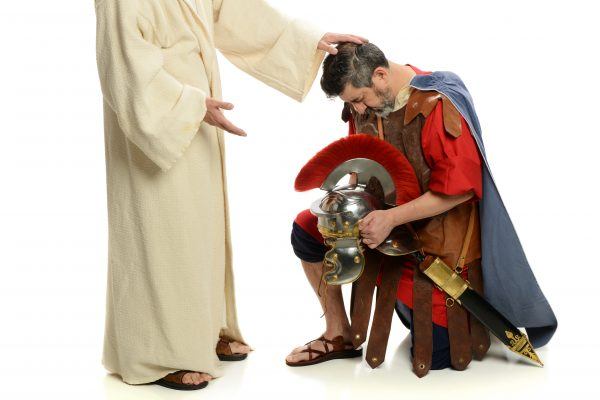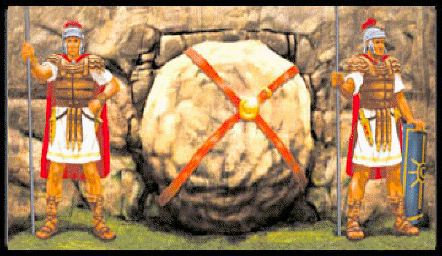


The piercing of Jesus' body by a spear did not cause his death. Blood oozing from a wound inflicted after death does not qualify as the shedding of blood required of an atonement offering. However, it is an interpolation unsupported by the best of the ancient New Testament manuscripts.

John's sequence of events is contradicted in some manuscript versions of Matthew 27:49 which state, " And another took a spear and pierced his side, and there came out water and blood." This addition to the verse places the time of the inflicting of the wound as prior to Jesus' death. Chronologically, John 19:33 established the time of the inflicting of the wound in Jesus' side ( John 19:34) as subsequent to his death. John 19:34 claims that " one of the soldiers pierced his side with a spear, and immediately there came out blood and water." According to John 19:33, the Roman soldiers did not break Jesus' legs because he was already dead. Longinus to pray for any special intentions during your six days of study and prayer.Did a Roman soldier shed Jesus' blood? Let's find out Answer: The discipline and efficiency of the legion as a fighting unit depended on them. If desired, pull out some paper and jot down thoughts and revelations that come to you as you read the narratives. Gealy says, the centurions were the actual working officers, the backbone of the army. The six passages below are offered to read and reflect upon-as a way to better fathom the Crucifixion of Christ and St.

People who serve in the military, converts, or those with a renewed sense of faith might feel particularly drawn to this soldier saint. Longinus listed on the March 15 page however, the current Roman Martyrology has his memorial moved to October 16. It is believed by some that the Holy Lance ― the actual lance that was embedded within the abdomen of Christ ― is securely contained within a reliquary below this inspiring image. Peter in Rome stands an enormous statue of Longinus pensively holding his lance. Within the beautiful dome of the Basilica of St. Longinus openly glorified God before his demeaning comrades with a profound declaration of belief and outward conversion. We can celebrate with certainty that the heart of one particular soldier was transformed. These brutal behaviors make the spontaneous confessions of faith from one of them seem miraculous.Īlthough many curious legends about Longinus make it difficult to verify actual truths, we can be sure of one important fact. They made cruel sport of the situation: mockingly dressing Jesus in a purple robe, crafting a painful crown of thorns, and spitting on and ridiculing him. During the Crucifixion of Jesus, the Roman military in charge gave all appearances of enjoying their part in the horrendous deed. This unexpected acceptance of Jesus by the soldier-centurion Longinus is truly startling. As the noon sunshine darkened and the earth trembled, Longinus faced Jesus and suddenly knew the truth: this gentle man nailed to the cross, now dead, was undoubtedly the innocent Son of God. The name might come from the Greek word longche, which means “lance.” Not a great deal of information is offered in the Bible on Longinus, but it is believed that he is the same as the centurion mentioned in the other Gospels who was awestruck at the moment of Jesus’ death. Longinus is the name given to the soldier who drove a spear into the side of Jesus upon his death. crucifixion, an important method of capital punishment particularly among the Persians, Seleucids, Carthaginians, and Romans from about the 6th century bce to the 4th century ce. But when they came to Jesus and saw that he was already dead, they did not break his legs, but one soldier thrust his lance into his side, and immediately blood and water flowed out.


 0 kommentar(er)
0 kommentar(er)
